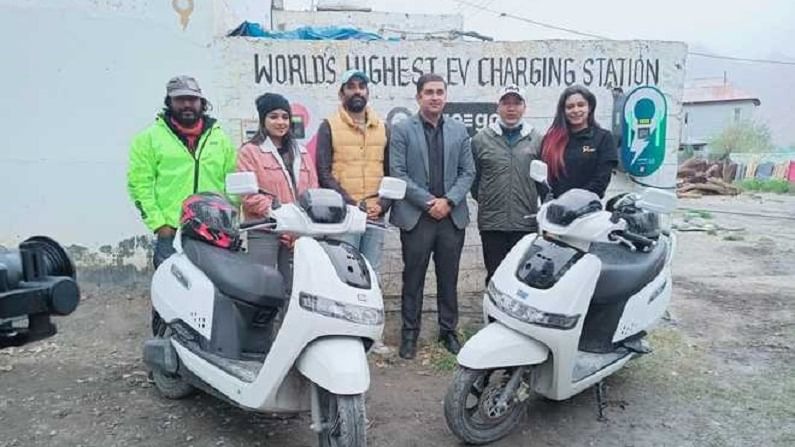Himachal gets world’s highest EV charging station
The E-Charging station is situated at almost 3,800m above sea level, making it the World’s Highest e-vehicle charging station

In a bid to promote and spread awareness regarding clean and sustainable energy, India has done it in a different way. Himachal Pradesh has got the world’s highest electric vehicle charging station in Kaza of Lahaul and Spiti district of Himachal Pradesh. The E-Charging station is situated at almost 3,800m above sea level, making it the World’s Highest e-vehicle charging station.
“This is the world’s highest electric vehicle charging station at 500 ft in Kaza. It is the first station here. If the station gets a good response, more stations would be set up. It will also help to check vehicular pollution,” said Mahendra Pratap Singh, Kaza Sub-Divisional Magistrate (SDM).
The E-station in Kaza will encourage local people to go Green. The country is already getting a good response for battery-operated small electric vehicles like e-rickshaws, e-carts, e-bikes e-scooter, and electric three-wheelers. To support the response, the country is establishing E-charging stations at various places across India. This will help in building an E-vehicle ecosystem in the near future.
Electric vehicles are the future and will help India
Just like in the late 1990s or early 2000s, the Internet was in its growing stage yet it was not preferred due to its irregularities and complications. But in just 20 years, the world has reshaped itself according to the Internet. Similarly the E- Vehicle market is in its initial stages and in near future, it will be a booming industry and will contribute towards reducing the carbon footprint.
The best part of E-vehicles is that, apart from reducing environmental pollution, EVs can lower oil imports by about $60 Billion by 2030. According to available data, currently, 82% of the oil demand in India is fulfilled by imports. So if the E-vehicles can contribute towards lowering the oil exports of India, then the Indian economy will be in profit.
Noticing a significant growth in EV charging infrastructure, the central government has extended the policy support to bolster the mass adoption of EVs in the country. In India, there lies a huge scope for growth in the Electric Mobility sector, including several other aspects related to it, such as Charging Infrastructure, battery recycling, reuse, and adoption among the masses. According to a Niti Aayog report, India will need a minimum of 10 GWh (Gigawatt hours) of cells by 2022.
The government is encouraging e-vehicle adoptions
With the world shifting away from traditional fuels to alternative sources of energy for transportation, electricity is becoming the most common choice for powering vehicles. And to support the shift, the Indian government has come up with plans like the National Electric Mobility Mission Plan (NEMMP) and Faster Adoption & Manufacturing of (Hybrid) and Electric Vehicles (FAME) Scheme.
Loan subventions and income tax rebates in E-Vehicles are also being supported by the government to give a platform to E-vehicle users. Some other ways that the Government is implementing for the promotion of EVs in India are-
> The GST amount is reduced from 12% to only 5% for E-vehicles compared to the regular cars’ 28% GST.
> Loans of around 1.5 Lakh exemption for buying electric vehicles.
> Customs duty exemption for importing EV parts.